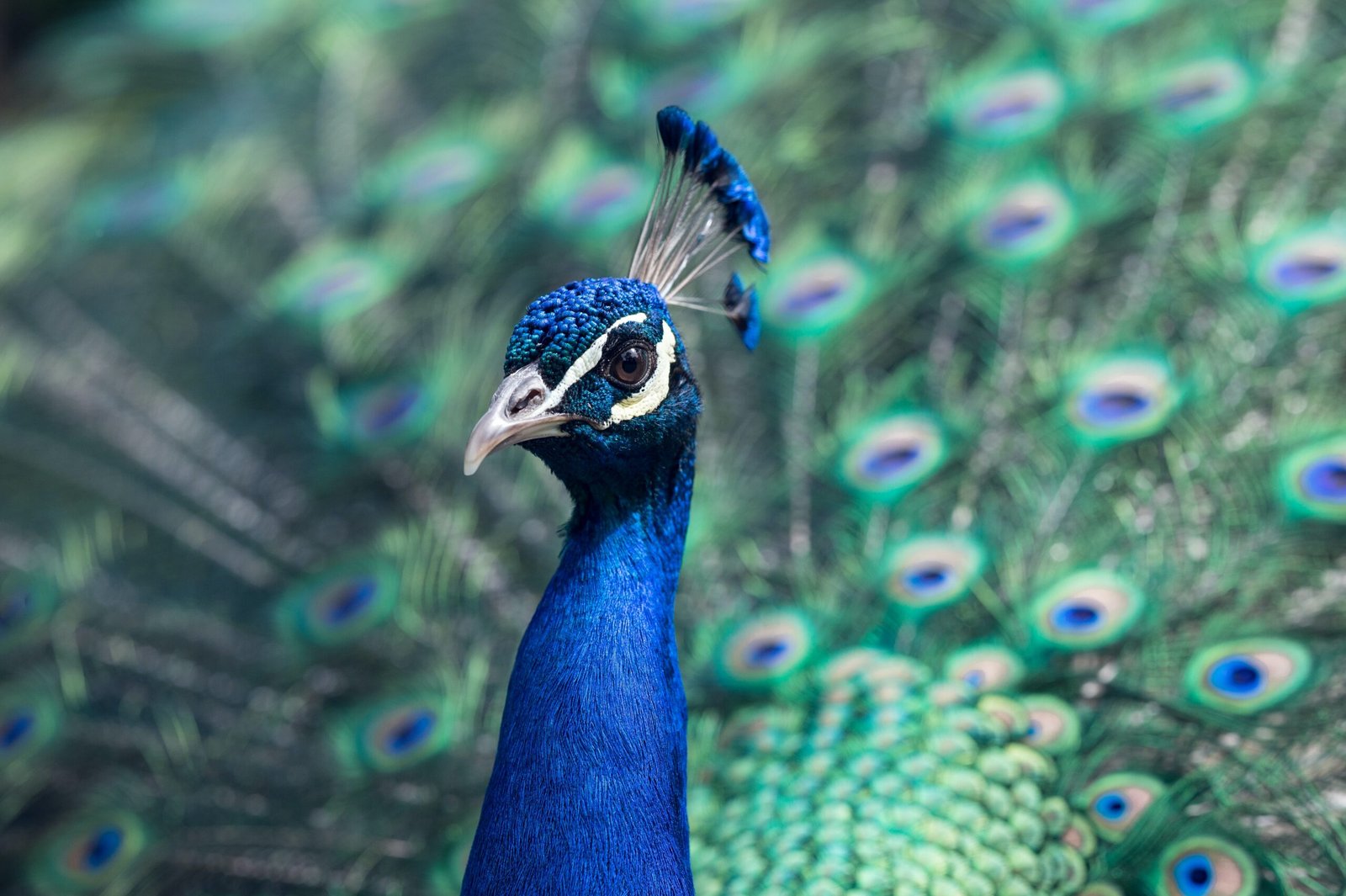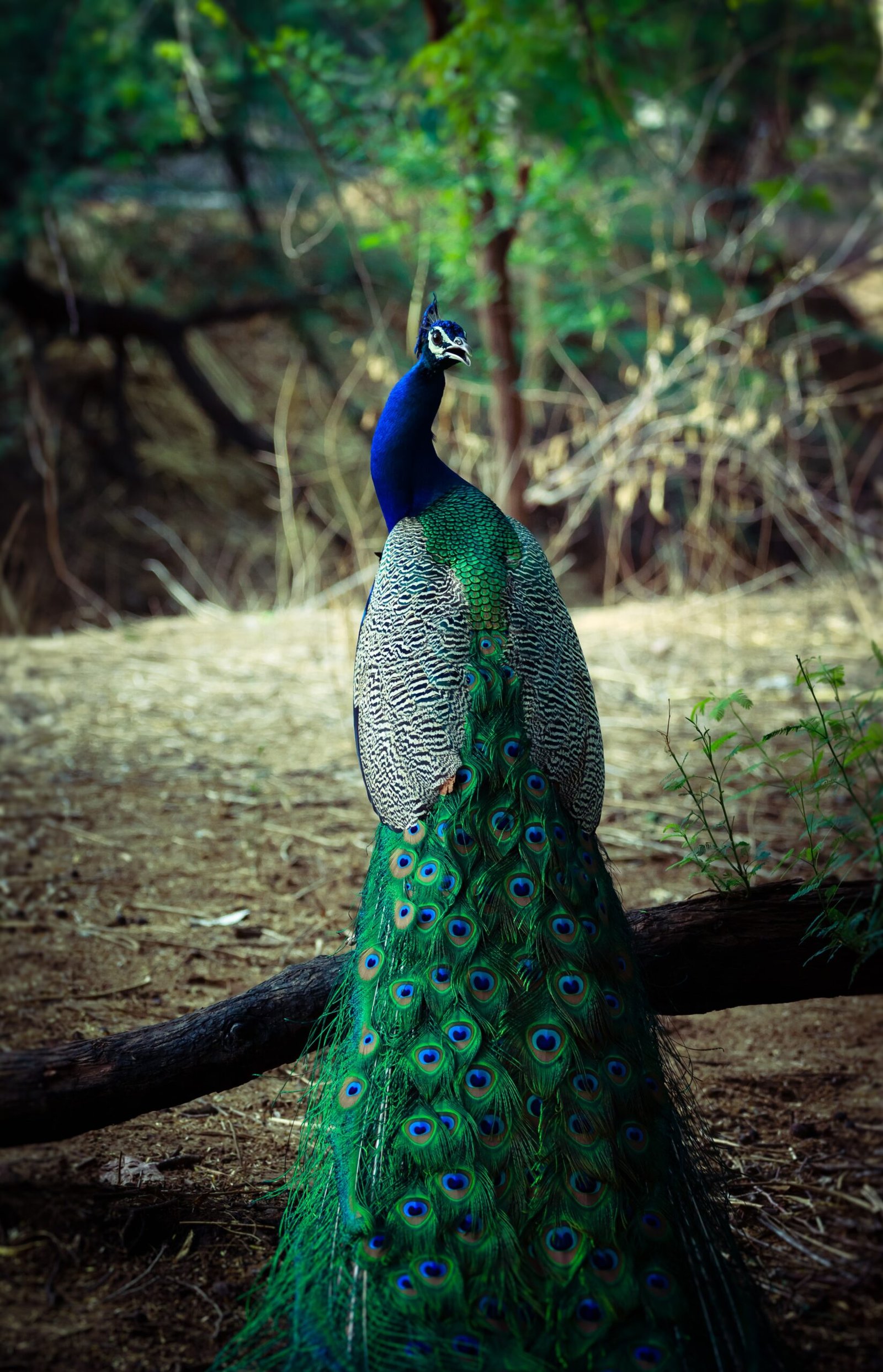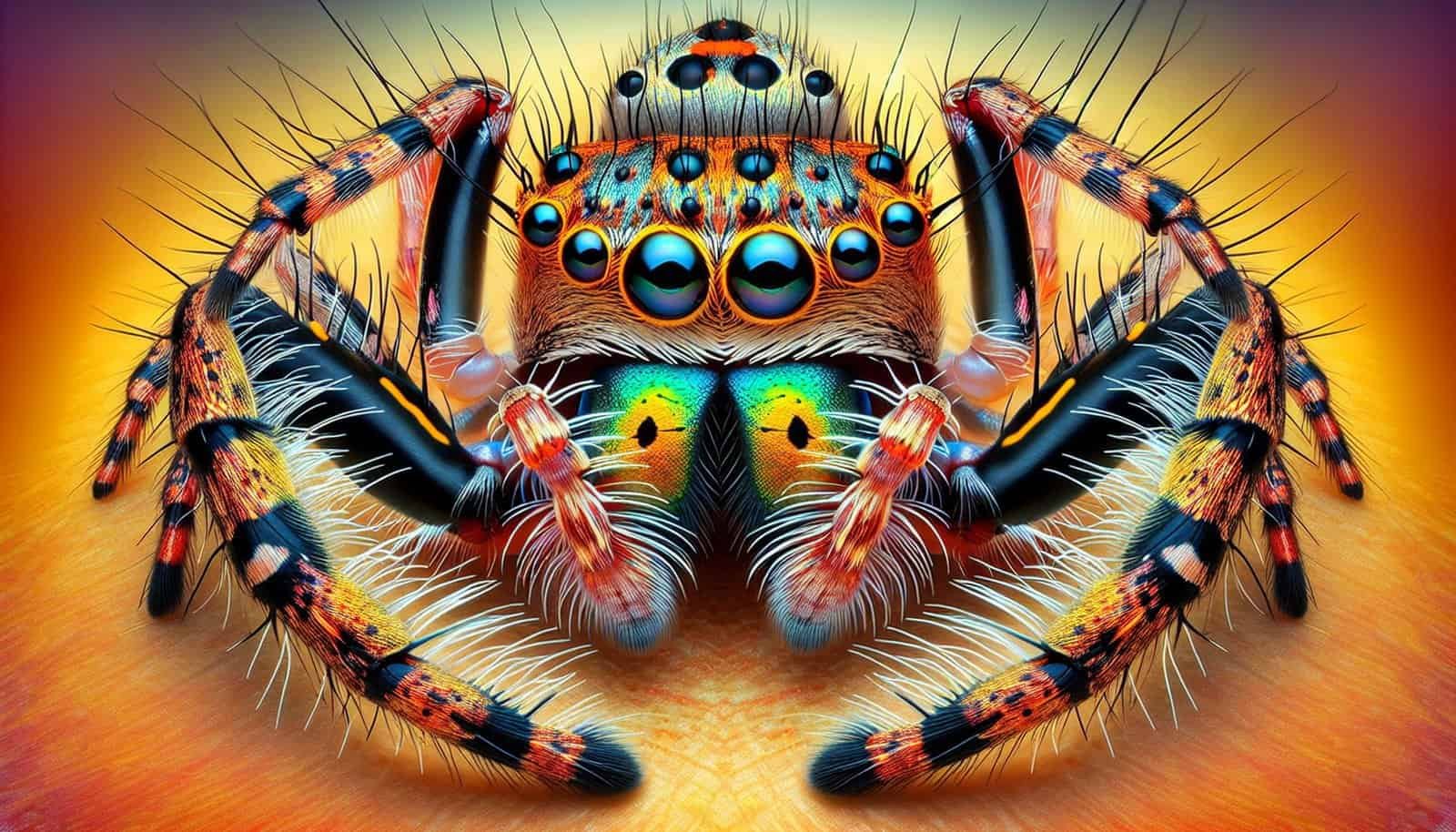In the fascinating world of arachnids, one creature stands out with its mesmerizing courtship displays – the enigmatic peacock spider. With its vibrant colors and intricate dance moves, this tiny spider captivates both researchers and nature enthusiasts alike. But how exactly can you identify and care for these intriguing spiders? In this article, we’ll explore the unique characteristics of the peacock spider and uncover the secrets to providing them with the proper care they deserve.
Understanding the Peacock Spider
Introduction to the Peacock Spider
The Peacock Spider is a fascinating and enchanting creature that belongs to the Maratus genus. These small spiders are known for their vibrant displays during courtship, which have captivated the attention of researchers and nature enthusiasts alike. Understanding the unique characteristics, habitat, and behavior of these spiders can lead to a deeper appreciation for the wonders of the natural world.
Physical Characteristics
Peacock Spiders are renowned for their intricate and colorful patterns, which resemble the plumage of a peacock. The males are the ones that display these vibrant hues to attract a potential mate. These spiders are usually very small, with the majority measuring less than five millimeters in size. Their bodies have a distinct shape and are covered in fine hair, giving them a fuzzy appearance. Despite their size, Peacock Spiders possess excellent vision and agility, enabling them to perform their intricate courtship dances with precision.
Habitat and Distribution
Peacock Spiders are native to Australia and can be found in various habitats across the country. They are typically found in grasslands, woodlands, and scrublands, and they prefer areas with ample vegetation and suitable prey. These spiders are adapted to live in diverse environments, from coastal areas to arid regions, showcasing their remarkable adaptability. While Australia is the primary home for Peacock Spiders, some species have been discovered in parts of New Zealand as well.
Identifying Peacock Spider Species
Different Peacock Spider Species
Within the Maratus genus, there are over 80 recognized species of Peacock Spiders, each with its own unique characteristics and patterns. These spiders are named after their discoverers or prominent features, such as Maratus volans, Maratus splendens, or Maratus pavonis. The diversity among species provides an exciting opportunity for researchers and spider enthusiasts to explore the evolutionary history and behaviors of these captivating creatures.
Distinctive Features and Patterns
Peacock Spiders are renowned for their intricate and distinctive patterns, which vary between species. The colorful designs on their abdomens often resemble flowers or geometric shapes, and they utilize these patterns during courtship displays. Additionally, each species possesses its own unique color palette, ranging from vibrant blues, reds, and yellows to more subdued earthy tones. These distinct attributes make it easier to identify and differentiate between the various species of Peacock Spiders.
Recognizing Male and Female
Distinguishing between male and female Peacock Spiders can be challenging, as both sexes possess unique features, albeit less striking in females. Males typically exhibit the captivating colors and elaborate patterns that define Peacock Spiders, while females tend to have more subdued coloration. Additionally, males have distinct mating structures called emboli, which are modified appendages used during copulation. By carefully observing the size, patterns, and specialized structures of these spiders, it is possible to identify their gender.

Observing Vibrant Courtship Displays
Overview of Courtship Behavior
The courtship behavior of Peacock Spiders is a mesmerizing spectacle. When males are ready to attract a female, they begin their intricate dance. They raise and extend their vibrantly colored abdomens, displaying their stunning patterns while performing a series of intricate movements. These displays are not only visually striking but also involve rhythmic leg waving, tapping, and vibrating. The male’s success in courtship relies on the quality and complexity of his performance.
Male Display Techniques
Male Peacock Spiders possess a range of techniques to lure females. Their elaborate dances involve a combination of leg movements, rhythmic vibrations, and precise movements within their silk-made displays. Some spider species even incorporate sound production into their displays using specialized structures called tymbals. These techniques demonstrate the male’s fitness and ability to produce vibrant offspring, and the more intricate the display, the greater the chances of attracting a mate.
Female Responses
Females play an active role in selecting a mate, and they evaluate the male’s display to determine his suitability as a partner. If the female is receptive, she may respond to the male’s advances by approaching him and reciprocating with her own subtle movements. However, if the female is uninterested or already mated, she may exhibit aggressive behavior or simply ignore the male’s display. The female’s response is critical in initiating the next steps of courtship, leading to successful copulation.
Significance of Vibrant Colors
The vibrant colors displayed by male Peacock Spiders play a crucial role in their courtship rituals. These colors are thought to signal the male’s genetic quality, health, and ability to provide resources for potential offspring. Females are believed to be attracted to males with the brightest and most elaborate displays as it indicates the male’s fitness and ability to ensure successful reproduction. The evolution of these vibrant colors and patterns highlights the complexities of mate selection and the fascinating world of sexual selection.
Factors Influencing Courtship
Several factors can influence the courtship behavior of Peacock Spiders. Environmental conditions, such as temperature and humidity, can impact their activity levels and willingness to engage in courtship displays. Additionally, the availability of suitable habitat and a sufficient supply of food may affect their reproductive behavior. Understanding these factors and creating a suitable environment when caring for Peacock Spiders is essential to promote their natural behavior and well-being.
Creating a Suitable Habitat
Understanding Peacock Spider’s Needs
When creating a suitable habitat for Peacock Spiders, it is essential to consider their specific requirements. These spiders require an environment that closely mimics their natural habitat, providing them with suitable temperature, humidity, and hiding places. Understanding their feeding habits and reproductive needs is crucial for their overall well-being and successful breeding in captivity.
Designing an Enclosure
To ensure the safety and comfort of Peacock Spiders, a well-designed enclosure is crucial. The enclosure should be escape-proof and offer ample space for the spiders to move and perform their courtship displays. A glass or plexiglass enclosure with proper ventilation is ideal for maintaining temperature and humidity levels. The enclosure should also have a secure lid to prevent accidental escape and potential harm to both the spiders and their human caretakers.
Temperature and Humidity Requirements
Peacock Spiders thrive in specific temperature and humidity ranges similar to their natural habitat. It is important to provide a suitable temperature gradient within the enclosure, allowing the spiders to move between warmer and cooler areas as needed. Maintaining humidity levels between 60% to 80% is crucial for their well-being, ensuring proper molting and preventing dehydration. Utilizing a hygrometer and a thermostat can help monitor and regulate these environmental factors effectively.
Providing Hiding Places
Peacock Spiders require hiding places within their enclosure to mimic their natural habitat and provide a sense of security. Adding natural elements such as bark, small plants, or artificial structures that resemble rocks or foliage can create suitable hiding spots. These hiding places not only offer a retreat for the spiders but also provide an opportunity for them to exhibit natural behaviors, such as constructing webs or retreats.
Feeding the Peacock Spider
Peacock Spiders are opportunistic hunters and mainly feed on small invertebrates, including insects and other spiders. Providing a varied diet is important for their nutritional needs. Live prey, such as fruit flies or pinhead crickets, can be offered regularly. It is essential to ensure the prey is appropriately sized, as offering prey that is too large may pose a risk to the spiders. Providing a shallow water dish and misting the enclosure regularly can also help maintain hydration.

Handling and Care Tips
Importance of Gentle Handling
When handling Peacock Spiders, it is crucial to prioritize their well-being and minimize stress. Due to their small size, delicate nature, and intricate patterns, it is recommended to avoid handling these spiders unless necessary. If handling is required, gentle techniques should be employed, using soft brushes or special spider handling tools. Manually restraining Peacock Spiders should be avoided, as it may cause injury or distress.
Creating a Stress-Free Environment
Peacock Spiders can be sensitive to environmental stressors, so it is important to create a calm and stress-free environment. Loud noises, sudden vibrations, or excessive handling can cause unnecessary stress, potentially leading to health issues or disrupted courtship behavior. Maintaining a consistent daily routine, providing a quiet space, and minimizing disturbances can help promote their overall well-being.
Preventing Escapes
Preventing escapes is crucial when caring for Peacock Spiders. These spiders are incredibly agile and can fit into small spaces, making it important to ensure the enclosure is secure. Regularly inspecting the enclosure for potential gaps or openings is necessary to prevent accidental escapes. Additionally, ensuring a secure lid with appropriate ventilation and locking mechanisms can significantly reduce the risk of accidental escapes.
Cleaning and Maintenance
Maintaining a clean enclosure is vital for the health and well-being of Peacock Spiders. Regularly removing uneaten prey, debris, and molts helps prevent the buildup of bacteria and other harmful organisms. Cleaning the enclosure with a mild, spider-safe disinfectant and rinsing thoroughly can help maintain a hygienic environment. It is important to handle cleaning products with caution, ensuring they are safe for use in the spider’s habitat.
Seeking Professional Help
In the event of any health concerns or questions regarding Peacock Spider care, it is advisable to seek assistance from a professional exotic spider veterinarian or an experienced spider keeper. These experts can offer guidance, diagnose potential health issues, and provide recommendations for appropriate care techniques. Consulting with professionals ensures the best possible care for these intricate creatures.
Breeding and Reproduction
Understanding Peacock Spider Reproduction
Peacock Spiders have a unique reproductive process that involves courtship displays followed by copulation. The males go to great lengths to impress potential mates through their vibrant displays, as mentioned earlier. Successful courtship results in copulation, where the males transfer their sperm to the females. Understanding the intricacies of their reproductive behavior is essential for those interested in breeding these spiders.
Pairing Male and Female
When breeding Peacock Spiders, it is crucial to pair compatible males and females. Each species has its own courtship rituals, and pairing individuals that are receptive to one another’s displays is vital for successful mating. Introducing the male to the female’s enclosure and closely monitoring their interactions can help determine compatibility. It is important to ensure there is no aggression or distress during the pairing process.
Observing Mating Behavior
Once paired, male Peacock Spiders initiate copulation by transferring their sperm to the female. These interactions may be brief or last for an extended period, depending on the species. It is important to observe and monitor their mating behavior closely to ensure successful mating and minimize any potential harm. Mating behaviors can vary between species, with some involving more complex rituals and others following a more straightforward process.
Identifying Successful Mating
After successful copulation, it is crucial to identify signs of successful mating to determine if fertilization has occurred. In some species, gravid females can be identified by the presence of a sperm plug or by observing changes in behavior. The presence of eggs or the production of an egg sac confirms successful mating. Ensuring the female has the appropriate environment and watchful monitoring of the egg sac are necessary for the survival and development of subsequent spiderlings.
Caring for Eggs and Spiderlings
Caring for Peacock Spider eggs and spiderlings requires attention to detail and an understanding of their specific needs. The female typically constructs an egg sac where she deposits her fertilized eggs and guards them until they hatch. It is crucial to provide suitable temperature and humidity levels to ensure the eggs’ viability. Once the spiderlings hatch, they should be provided with a safe space, appropriate food, and suitable conditions for growth and development.

Dealing with Potential Challenges
Common Health Issues
Like any living organism, Peacock Spiders can face various health issues. These may range from mites or parasitic infections to injuries and malformations. Regular observation and monitoring of the spiders’ behavior, appearance, and feeding habits is vital in detecting potential health issues. Consulting with a specialist or veterinarian experienced in exotic spiders is recommended in case of any concerns regarding the Spider’s health.
Recognizing Stress and Aggression
Peacock Spiders are generally docile creatures but can exhibit signs of stress or aggression in certain situations. Rapid, jerky movements, excessive hiding, lack of appetite, or aggressive behavior towards other spiders or caretakers may indicate stress or discomfort. Identifying these signs early on and addressing the underlying causes can prevent further complications and ensure the well-being of the spiders.
Addressing Physical Injuries
Accidental physical injuries can occur when handling or due to encounters with other spiders within the enclosure. In case of injuries, it is important to handle the spider with care and seek professional advice if needed. Providing a quiet, separate space for injured spiders, and maintaining a clean environment around the wound can aid in the healing process. However, it is essential to consult with an experienced professional for proper treatment if a significant injury occurs.
Dealing with Mating Difficulties
Mating difficulties can arise due to various factors, such as incompatible mating behaviors or stressors within the environment. If mating attempts are repeatedly unsuccessful, separating the pair and reviewing their compatibility is recommended. It may also be beneficial to consult with experienced breeders or researchers who can provide insights into specific species’ mating behaviors and potential solutions to overcome difficulties.
Seeking Veterinary Assistance
In situations where the health or well-being of Peacock Spiders is a concern, seeking veterinary assistance from professionals experienced in exotic spiders is crucial. These specialists can provide thorough examinations, diagnoses, and recommend appropriate treatment options. Early intervention and proper veterinary care can significantly improve the chances of recovery and ensure the best possible care for the spiders.
Conservation and Legal Considerations
Threats to Peacock Spider Populations
Peacock Spider populations face various threats that can impact their survival. Loss of habitat due to land development and deforestation poses a significant threat to their populations. Climate change and habitat degradation also affect the availability of suitable habitat and food sources. Additionally, pollution, pesticide use, and the introduction of invasive species can further disrupt their fragile ecosystems.
Importance of Conservation Efforts
Conservation efforts are essential to protect and preserve the delicate balance of Peacock Spider populations. Educating the public about the importance of these spiders and their roles within the ecosystem is crucial to garner support for conservation initiatives. Encouraging the preservation of natural habitats, implementing sustainable land-use practices, and minimizing the use of harmful chemicals are vital steps in safeguarding these unique creatures for future generations.
Legal Regulations and Permits
Peacock Spiders and their habitats may be protected by local or international laws and regulations. In some cases, obtaining permits may be necessary for captive breeding or collecting these spiders. It is important to research and adhere to applicable laws and regulations to ensure ethical and legal practices when interacting with these spiders.
Educating Others about Conservation
Spreading awareness about Peacock Spiders and their conservation needs is instrumental in rallying support for their protection. Sharing knowledge through educational programs, social media, and other platforms can help dispel myths and misconceptions surrounding spiders and foster a sense of appreciation and stewardship for these unique creatures. Engaging in citizen science initiatives and supporting conservation organizations can also contribute to the long-term preservation of Peacock Spiders.

Interacting with Peacock Spiders in the Wild
Enjoying Spider-Watching
Spider-watching in the wild can offer a unique and rewarding experience for nature enthusiasts. Observing Peacock Spiders in their natural habitat can provide valuable insights into their behavior and ecology. When engaging in spider-watching, it is important to respect their space and avoid disturbing their natural behaviors. By observing from a safe distance and using binoculars or cameras with zoom lenses, one can appreciate these fascinating creatures without causing harm.
Responsible Wildlife Photography
Capturing images of Peacock Spiders in their habitat can help raise awareness about their beauty and importance. When photographing these spiders, it is crucial to prioritize their welfare and minimize any disturbances. Utilizing long lenses, being patient, and refraining from disturbing or manipulating their natural surroundings are key to responsible wildlife photography. Respecting their natural behaviors and habitats is essential for their well-being and conservation.
Ethical Considerations
When interacting with Peacock Spiders or any wildlife, it is important to prioritize their welfare and adhere to ethical considerations. Avoiding actions that may cause stress, harm, or disruption to the spiders or their habitat is crucial. This includes refraining from collecting wild individuals, avoiding unnecessary handling, and being mindful of the impact of our actions on the delicate balance of their ecosystems.
Protecting their Natural Habitats
Preserving the natural habitats of Peacock Spiders is crucial for their long-term survival. Supporting organizations dedicated to habitat conservation and land protection can make a significant difference. Additionally, practicing responsible tourism and promoting sustainable practices can help minimize the negative impact on their ecosystems. Awareness and advocacy for the protection of their habitats are key to ensuring a future where Peacock Spiders continue to thrive in their natural environments.
Discoveries and Research
Recent Scientific Findings
The realm of Peacock Spider research is ever-evolving, with new scientific discoveries being made regularly. Recent findings have shed light on various aspects of their behavior, including courtship rituals, mating preferences, and environmental adaptations. Researchers continue to explore the evolutionary significance of their vibrant colors and patterns, unraveling the intricate web of sexual selection and its impact on species diversity.
Contributions to Evolutionary Biology
Peacock Spiders have become an intriguing subject of study, contributing valuable insights to the field of evolutionary biology. Their elaborate courtship displays and diverse color patterns offer researchers a unique opportunity to observe sexual selection and speciation in action. By unraveling the complexities of mate choice, these spiders provide a deeper understanding of the evolution of elaborate behaviors and the role of sexual selection in shaping biodiversity.
Ongoing Research Projects
Intrigue surrounding Peacock Spiders has led to ongoing research projects focused on their biology, behavior, and conservation. These projects aim to deepen our understanding of these enigmatic creatures, their habitats, threats, and the ecological significance of their vibrant displays. Citizen science initiatives also provide opportunities for individuals to contribute data and observations, aiding researchers in their quest for knowledge.
Opportunities for Citizen Science
Citizen science programs allow individuals to actively participate in scientific research and contribute directly to our understanding of Peacock Spiders. By recording observations, documenting behaviors, or collecting data, enthusiasts can help researchers map distributions, study breeding patterns, or monitor population trends. Engaging in citizen science not only promotes education and awareness but also plays a crucial role in fostering a sense of ownership and responsibility for the well-being of these captivating creatures.
In conclusion, understanding and caring for Peacock Spiders requires a thorough understanding of their unique characteristics, courtship behaviors, reproductive needs, and environmental requirements. By creating suitable habitats, providing proper care, and adhering to ethical considerations, we can appreciate the beauty and wonder of these enigmatic creatures while actively contributing to their conservation. Through ongoing research, education, and the preservation of their natural habitats, we can ensure the continued survival and thriving of the Peacock Spider species for future generations to marvel at.

